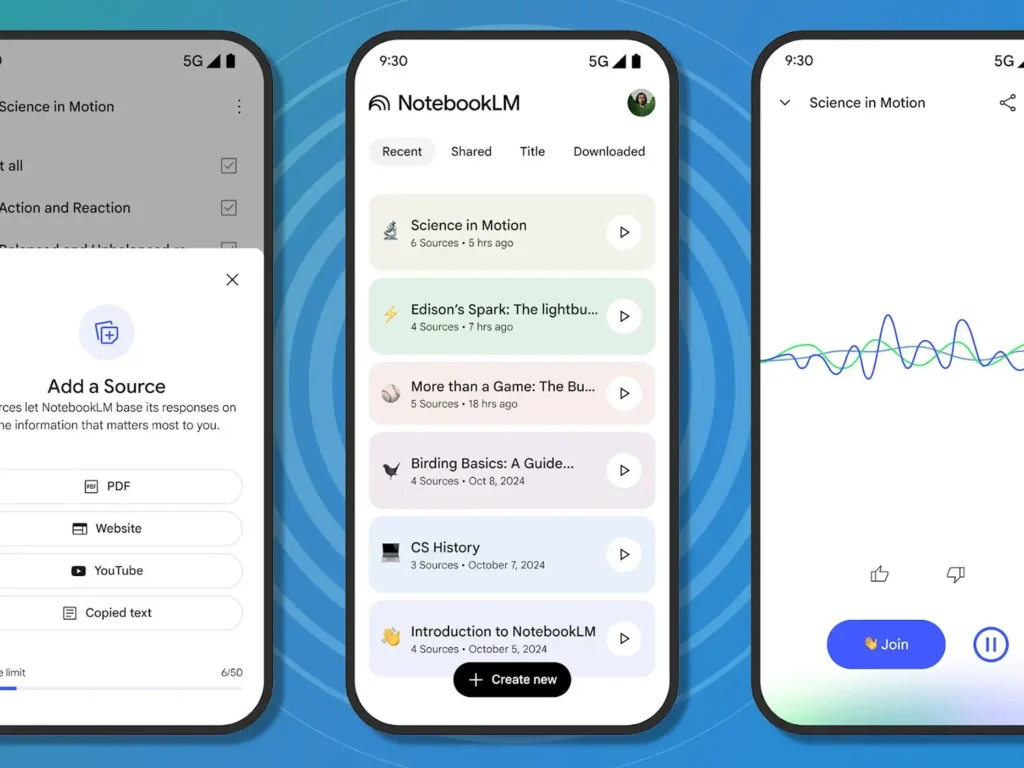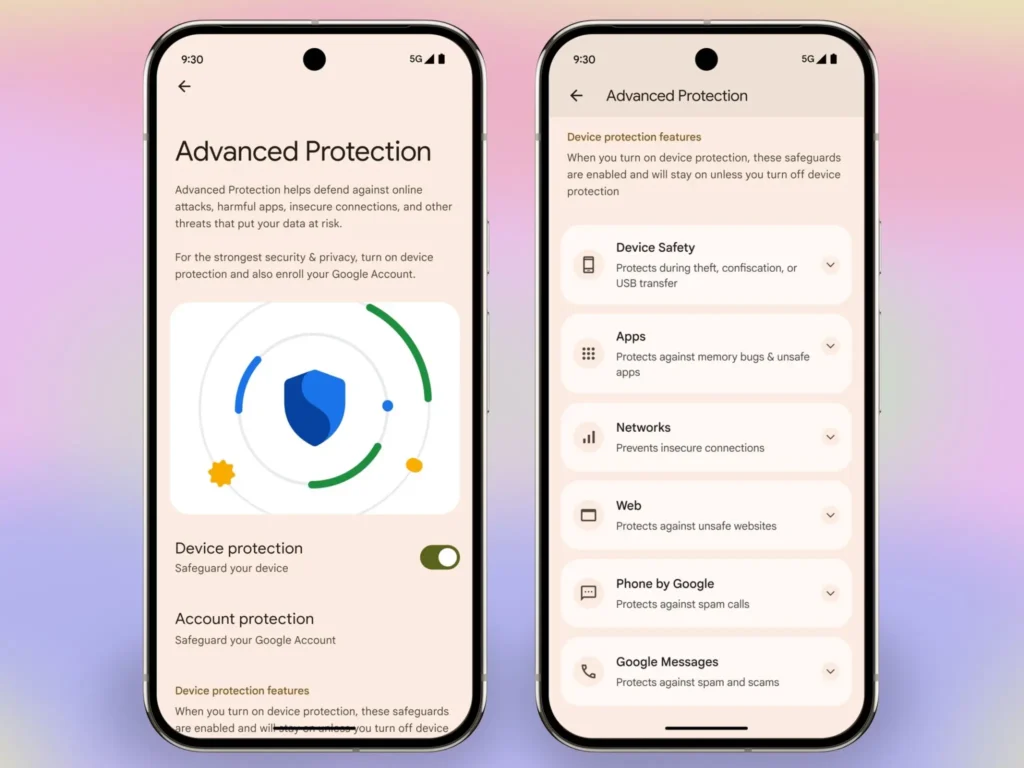NotebookLM Goes Mobile
Google has just rolled out the mobile edition of NotebookLM, a smart note-taking and research assistant, for both Android and iOS devices. The launch arrived slightly earlier than expected, just ahead of the tech giant’s annual developer showcase, Google I/O 2025.
Previously available only via web browsers, NotebookLM is designed to help users make sense of detailed or difficult content by turning documents and media into something easier to digest. It uses artificial intelligence to answer questions, summarise sources, and assist with information-heavy tasks.

Image F1: Google NotebookLM (Source Techradar)
The mobile release brings this experience to smartphones, allowing users to interact with the app wherever they are — whether on public transport, during travel, or on the move.
A Research Assistant in Your Pocket
One standout feature is the ability to listen to summarised content even without an internet connection. People can now download these “Audio Overviews” ahead of time and play them back later, perfect for places with spotty reception or limited data access. The app also runs quietly in the background while you multitask, offering a hands-free experience.
Another key element is the interactive functionality. Users can actively engage with the app’s virtual hosts by tapping a button to pose questions or guide the discussion. Whether you’re asking about a specific topic or just exploring ideas, the app is built to respond in a helpful and often conversational way.
The new app also makes it easier to gather material on the go. Say you’re reading a webpage, watching a video, or going through a document — you can simply hit the share icon and send that content straight to NotebookLM. It becomes part of your reference collection instantly. Over time, Google says it will expand support for other content types.
NotebookLM is also aligned with your phone’s display settings. It follows your system preference, whether you prefer dark mode for low light or light mode during the day — helping it feel seamless and well integrated.
Given the timing of the release, it’s likely Google will showcase more features or updates during the I/O keynote this week.
Tougher Security Coming to Android Devices
This comes on the heels of Google’s recent announcement of a significant Android security upgrade. A new feature called Advanced Protection will be introduced with the Android 16 update, designed to safeguard users from targeted digital attacks.
This comes at a time when high-level spyware tools are being sold and used to compromise smartphones — sometimes even those with the latest patches installed. These tools can infiltrate devices, access messages, contacts, call logs, locations, and more, often without the user ever noticing.

Image 2: Android 16’s Advanced Protection mode (Source: Notebookcheck)
Advanced Protection is aimed at people who are more likely to be the target of these kinds of attacks — such as journalists, political figures, and human rights workers. With a single switch in the settings menu, users can activate an entire suite of protections designed to dramatically reduce the risk of compromise.
Built for High-Risk Environments
Once enabled, the system prevents the device from connecting to outdated 2G mobile networks, which are known to be easy for hackers to monitor. It also blocks automatic connections to public Wi-Fi networks that don’t use modern encryption.
Google is adding advanced memory protections too, through a technology called the Memory
Tagging Extension, which helps protect against common vulnerabilities used in high-end exploits. Other safeguards include the device locking itself after a prolonged offline period, and in some cases, shutting down completely if left unused, making it nearly impossible for attackers to access data without a proper unlock.
There’s also a feature called Intrusion Logging, which quietly records suspicious activity in a protected part of the phone’s memory. This can help analysts understand how an attack happened — or confirm that one occurred in the first place.
To reduce the chances of browser-based hacks, the mode also disables some internal functions, such as Android’s JavaScript performance booster, which could otherwise be exploited.
While these features may reduce some device performance or convenience, they offer strong protections in high-risk scenarios. The concept is similar to Apple’s Lockdown Mode, introduced in 2022, which also aimed to make devices harder to breach by reducing unnecessary digital exposure.
Google’s approach follows a similar path — turning off non-essential features that attackers could use, and giving more control to users who need stronger privacy and defence.

